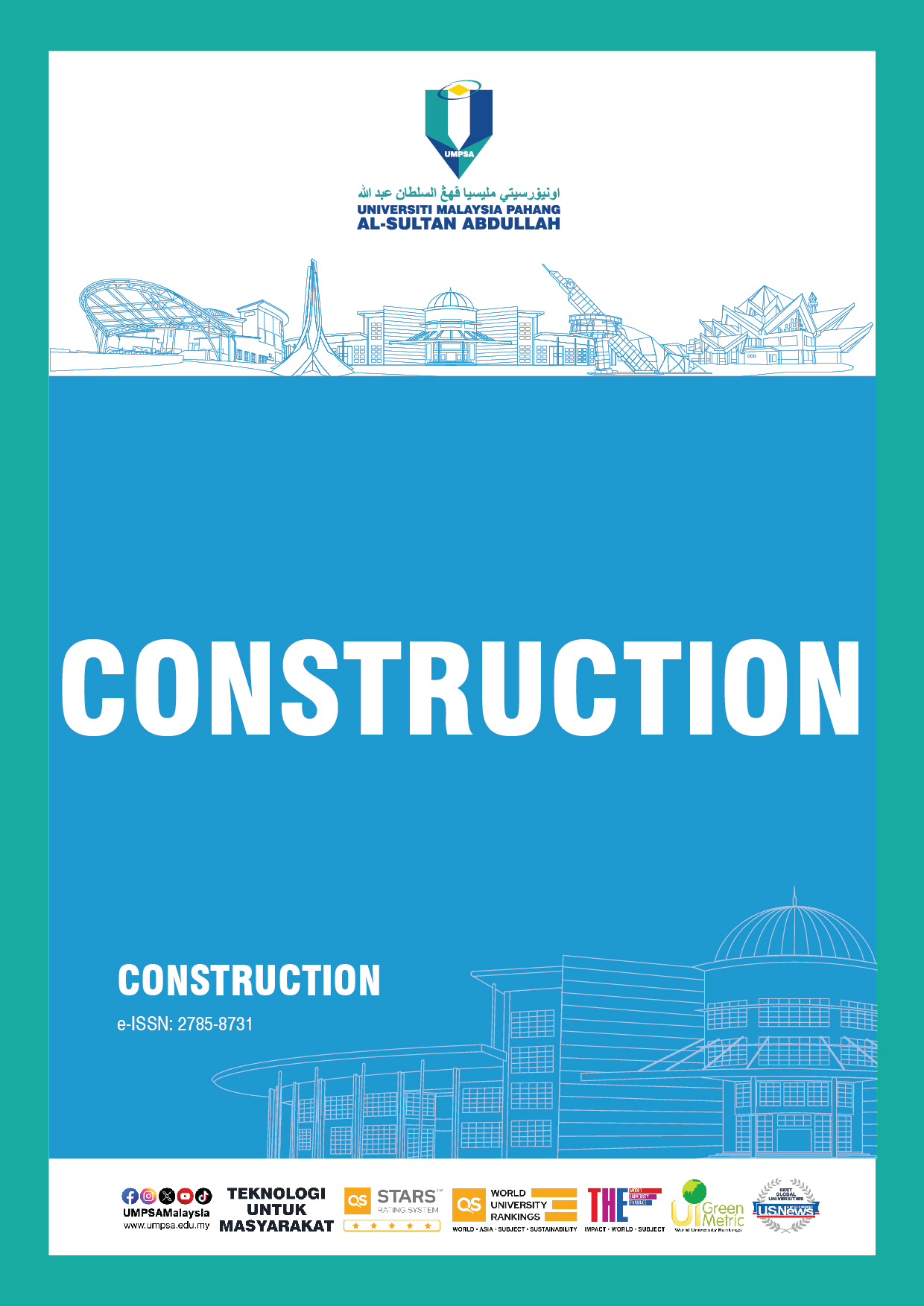Investigation on the Space Patterns and Influential Factors for Distribution of Traditional Villages in Sichuan
DOI:
https://doi.org/10.15282/construction.v4i2.10771Keywords:
Traditional village, Sichuan, Space pattern, Influential factorAbstract
Traditional villages encapsulate the core of traditional culture and represent an indispensable element for rural revitalization. Nevertheless, over the past few decades, the continuous expansion of urban areas has resulted in the destruction of these villages. It holds immense importance to scrutinize the spatial arrangement and factors influencing the safeguarding and advancement of traditional villages. Previous research has predominantly concentrated on the value and protective mechanisms of traditional villages, overlooking their spatial distribution attributes and influencing factors. Hence, The paper focus on 396 traditional villages in Sichuan. Google Earth was utilized to rectify the longitude and latitude coordinates of villages. ArcGIS 10.8 and Geo-detector 2015 software was employed to examine the geographical distribution and influencing factors of traditional villages in Sichuan. The findings revealed that: (1) Sichuan traditional villages exhibit a clustered distribution, with the highest concentration found in Bazhong and Guangyuan cities in northeast Sichuan. Following closely are Li County of Aba Prefecture, Danba County of Ganzi Prefecture in northwest Sichuan, the junctions of Zigong, Neijiang, and Luzhou in southern Sichuan, and the junctions of Ya'an, Meishan, and Leshan in the Chengdu Plain. (2) Traditional villages in Sichuan are impacted by natural environmental and socio-economic factors, with temperature, altitude, precipitation, and distance from cities significantly affecting their distribution. (3) Approaches for the conservation and advancement of those villages include supporting spontaneously organized eco-friendly and sustainable agricultural projects by farmers, as well as planning the development of concentrated and contiguous tourism industries while protecting the ecological environment.
Downloads
References
W. Tao, M. Jiamin, W. Dongsheng, K. Adeyeye and Y. Peng, "Extenics: A new approach for the design, reconstruction and renewal of traditional villages," Procedia Computer Science, vol. 162, pp. 908-915, 2019.
M. Li, W. Ouyang and D. Zhang, "Spatial distribution characteristics and influencing factors of traditional villages in Guangxi Zhuang autonomous region," Sustainability, vol. 15, no. 1, p. 632, 2022.
M.L. Idris, A.R. Abdul Rahman, B. Ishiyaku and A.R. Alias, "Preserving heritage buildings with building information modelling: Addressing the challenges and opportunities," Smart and Green Materials, vol. 1, no. 1, pp. 33-43, 2024.
G. Yang, L. Wu, L. Xie, Z. Liu and Z. Li, "Study on the distribution characteristics and influencing factors of traditional villages in the Yunnan, Guangxi, and Guizhou rocky desertification area," Sustainability, vol. 15, no. 20, p. 14902, 2023.
J. Zhang, R. Zhang, Q. Li, X. Zhang and X. He, "Spatial sifferentiation and differentiated development paths of traditional villages in Yunnan Province," Land, vol. 12, no. 9, p. 1663, 2023.
Y. Xiaojun, F. Chuanshan and Z. Kaikai, "A study of spatial-temporal pattern and influencing factors of traditional villages in Shaanxi Province," In IOP Conference Series: Earth and Environmental Science, vol. 242, no. 5, p. 052011. IOP Publishing, 2019.
W. Hu, Authenticity of Ethnic Tourism: Ethnic Villages in Sichuan, https://hdl.handle.net/10292/12836 (2019, accessed 11 March 2024).
Q. Li, K. Wumaier and M. Ishikawa "The spatial analysis and sustainability of rural cultural landscapes: Linpan settlements in China’s Chengdu plain," Sustainability, vol. 11, no. 16, p. 4431, 2019.
X. Xi, H. Xu, Q. Zhao and G. Zhao "Making rural micro-regeneration strategies based on resident perceptions and preferences for traditional village conservation and development: The case of Huangshan Village, China," Land, vol. 10, no. 7, p. 718, 2021.
Y. Tan, M. Xiang, H. Luet al., "Spatial difference studies and driving force analysis of rural settlements in the Northwest Sichuan plateau," Sustainability, vol. 15, no. 9, p. 7074, 2023.
H. Su, Y. Wang, Z. Zhang and W. Dong "Characteristics and influencing factors of traditional village distribution in China," Land, vol. 11, no. 10, p. 1631, 2022.
C. He and R.Y. Wang, "Study on spatial distribution characteristics and influencing factors of traditional villages in Zhanjiang city based on GIS," vol. 10, no. 6, pp. 11-26, 2022.
W. Chen, L. Yang, J. Wu et al. "Spatio-temporal characteristics and influencing factors of traditional villages in the Yangtze River Basin: A geodetector model," Heritage Science, vol. 11, no. 1, p. 111, 2023.
B. Li, J. Wang and Y. Jin, "Spatial distribution characteristics of traditional villages and influence factors thereof in hilly and gully areas of Northern Shaanxi," Sustainability, vol. 14, no. 22, p. 15327, 2022.
C. Gao, Y. Wu, C. Bian and X. Gao, "Spatial characteristics and influencing factors of Chinese traditional villages in eight provinces the Yellow River flows through," River Research and Applications, vol. 39, no. 7, pp. 1255-1269, 2023.
L. Zhang, "Quality Evaluation and Spatial Differentiation of Rural Human Settlements: A Case Study of Sichuan Province, China," In: Proceedings of the 2nd International Conference on Public Management and Big Data Analysis. Harbin, China: SCITEPRESS - Science and Technology Publications, pp. 114–119, 2023.
Q. Li, K. Wumaier and M Ishikawa, "The spatial analysis and sustainability of rural cultural landscapes: Linpan settlements in China’s Chengdu plain," Sustainability, vol. 11, no. 16, p. 4431, 2019.
Z. Wei, F. Zhang, Y. Li et al., "Analysis on spatial distribution and influencing factors of China National Forest Villages based on GIS, 29 June 2021, Preprint (Version 1) available at Research Square
R. Jiang, Z. Zheng and L. Jia, "Distribution characteristics of provincial traditional villages and their reasons," Journal of Landscape Research, vol. 10, no. 2, pp. 37-41, 2018.
W. He, L.Y. Wang, W.J. Yu et al., "Prevalence and spatial distribution patterns of human echinococcosis at the township level in Sichuan Province, China," Infectious Diseases of Poverty, vol. 10, no. 1, p. 82, 2021.
H. Heng, Transforming the Chinese countryside: a socio-spatial analysis of the development of new villages in Sichuan. Thesis, Newcastle University, http://theses.ncl.ac.uk/jspui/handle/10443/4004 (2017, accessed 11 March 2024).
Y. Liu, L. Liu, S. Lu and Q. Zhang, "Ecological landscape resource management and sustainable development of traditional villages," Journal of Environmental Protection and Ecology, vol. 21, no. 5, pp. 1938-1949, 2020.
A. Ghorbani, H. Mousazadeh, F. Taheri, et al. "An attempt to develop ecotourism in an unknown area: The case of Nehbandan County, South Khorasan Province, Iran," Environment, Development and Sustainability, vol. 23, pp. 11792-11817, 2021.
Yang X, Pu F. "Clustered and dispersed: exploring the morphological evolution of traditional villages based on cellular automaton," Heritage Science, vol. 10, no. 1, p. 133, 2022.
Downloads
Published
Issue
Section
License
Copyright (c) 2024 The Author(s)

This work is licensed under a Creative Commons Attribution-NonCommercial 4.0 International License.




